67 Results for : cámara
-

Harry Potter y la cámara secreta
Harry Potter y la cámara secreta: ab 8.99 €- Shop: ebook.de
- Price: 8.99 EUR excl. shipping
-
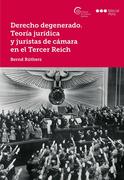
Derecho degenerado. Teoría jurídica y juristas de cámara en el Tercer Reich
Derecho degenerado. Teoría jurídica y juristas de cámara en el Tercer Reich: ab 11.99 €- Shop: ebook.de
- Price: 11.99 EUR excl. shipping
-
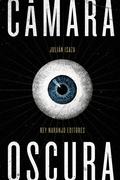
-
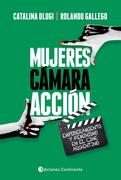
Mujeres cámara acción
Mujeres cámara acción - Empoderamiento y feminismo en el cine argentino: ab 6.99 €- Shop: ebook.de
- Price: 6.99 EUR excl. shipping
-
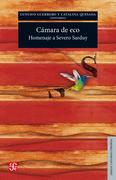
-
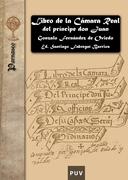
Libro de la Cámara Real del príncipe don Juan oficios de su casa y servicio ordinario
Libro de la Cámara Real del príncipe don Juan oficios de su casa y servicio ordinario: ab 7.49 €- Shop: ebook.de
- Price: 7.49 EUR excl. shipping
-
Trionaten op.1,Bologna 1695
Unbekannte Werke, die Emilio Moreno mit seinem Ensemble La Real Cámara einspielt, sind immer der Entdeckung wert. So auch im Fall der 1695 als Op.1 erschienen Trattenimenti armonici da camera des gebürtigen Spaniers Francisco José de Castro. Die Triosonaten bestechen durch ihre eigenwillige Vermischung des römischen Klassizismus à la Corelli mit einer größeren Freude an der Virtuosität, die auch Elemente des Stylus Phantasticus miteinbezieht.- Shop: odax
- Price: 18.86 EUR excl. shipping
-
Flötenkonzert,Gitarrenkonzert
Orquesta de Cámara de la Habana - Thomas Gabrisch (Dir) // Emotionale Extreme, mitreißende Rhythmen, atemberaubende Virtuosität: Seine karibische Heimat funkelt aus allen Takten der Musik von Joaquín Clerch. Dass der kubanische Gitarrist, der von den Senioren des berühmten Buena Vista Social Club respektvoll mit "Maestro" angeredet wurde, seine kompositorischen Vorbilder in Bach, Beethoven und Brahms sieht, lässt ihn diese Herkunft keineswegs verleugnen.- Shop: odax
- Price: 17.17 EUR excl. shipping
-
-
Clarinete Solo. Mexico Vol. 1
SOLO CLARINET Mexico Vol. 1 Javier Vinasco Fifty years of music for solo clarinet. Mexico (1957-2007) Composers born in the 20th century To record a CD for solo clarinet with pieces by Mexican composers has been an arduous, difficult, and at the same time rewarding undertaking. On this journey we have investigated a variety of routes and paths that composers had taken and have come to recognize that there is an ample compendium of creators dedicated to writing for the clarinet. These composers have explored languages that range from the acknowledgment of tradition to less conventional experimentations, demonstrating both significant evolution and compositional maturity. Our efforts have resulted in an anthology that shows a glimpse of the variety, quality, and expressivity of the ample spectrum of compositions that, in this case, were selected with an inquisitive spirit from archives, catalogs and private collections. At the same time, this CD presents two new compositions written especially for this project by Alejandro Colavita and Fernando Cataño. Mario Lavista (1943- ) wrote Madrigal (1985), in collaboration with the clarinetist Luis Humberto Ramos, to whom the piece was dedicated. It is a work articulated in two contrasting sections: the first calls to mind the medieval form of the madrigal with the use of a single pedal and two voices, one superior and the other inferior, thus creating an illusion of polyphony within the instrument's monophonic possibilities. The second section, on the other hand, makes use of non-conventional fingerings to achieve different colours of the same note as well as to produce two or more sounds simultaneously. Lavista then re-elaborates this resource, for the piece's conclusion, in an organum, and so, achieves coherence and unity. Elegía (1962) by composer, Manuel de Elías (1939- ), is a piece in a single movement of lyrical nature in which there is a perceived motor impulse from beginning to end. In Imago (1977), the composer liberates the metric and delves deep into the use of technology external to the instrument, in this case the echo chamber, affecting the clarinet's sound. This device provokes in the listener an alternate perception of sounds from the direct source with other moments in which one can detect their reflection. Divertimento (1985) by composer, Gabriela Ortiz (1964- ) and dedicated to Luis Humberto Ramos, is a piece written in a single movement that retains a rhythmic preeminence and that has it's roots in popular music. Although this is one of her earliest compositions, it is possible to recognize -by the construction of phrases and her ample dynamic palette- an efficient combination of technique and intuition. The náhuatl legend of the 'five suns' is the background for the piece titled Macuiltonatiuh (2007), by the composer, Alejandro Colavita (1973- ). This composition was worked closely with the clarinetist, Javier Vinasco, to whom it was dedicated. Macuiltonatiuh is comprised of five continuous movements in a contemporary language that makes use of the extensive gamut of expressive resources in today's clarinet technique. It is possible to discern a search for timbres which, in turn, determine each movement's structure, as well as the overall form of the piece. It is a pursuit that initiates in the depths of the lowest register of the clarinet (shalomuo register) and slides, in continuous ascent, to the instrument's highest limits. Clamoreo (1991) for clarinet and magnetic tape, by the composer Víctor Rasgado (1959- ) is a fragment from his opera Anacleto Morones. Here, the composer carries out a timbrical exploration by combining an acoustic instrument with electronic sounds. It is written in a single movement in which the clarinet presents two motives that persist throughout the entire piece, thus reacting to the changes generated by the tape. Tres Epigramas (1999), for their part, are movements elaborated as independent and self-contained units in which one can appreciate the influences of serialism. The first and third were dedicated to Guido Arbonelli while the second was dedicated to José Luis Nieto Bustamante. Fernando Cataño (1928- ) wrote Llanuras and Ternura in 1957 and 2006, respectively. Both pieces are composed in a single movement in which the inspiration originates from a mystical search undertaken by the composer. Through contemplation, Cataño explores themes related to Mexico's religious syncretism. In these searches, the composer exalts mestizo spirituality within a nationalist frame, and so, demonstrates congruency throughout his pieces with the use of common elements present from his earliest compositions. Up to this point, Llanuras had remained unedited, while Ternura was composed especially for this project. In this recording both pieces make their first public appearance. Cuatro estudios (1975) by composer Jorge Córdoba (1953- ) have a didactic purpose insofar as they develop the musician's technical abilities while exploring different musical elements in each one of them. In the first, articulation works in function of the phrasing, in the second, rhythm is explore by combining measures in simple and compound time, the third fosters perfection of the legato technique, while the fourth contrasts with the previous one, by emphasizing the use of staccato notes. Javier Vinasco is currently one of the most distinguished clarinet players in Latin America. He devotes a significant amount of his work to the interpretation and diffusion of his continent's music, as can be appreciated in his recordings with Música de Cámara Latinoamericana and Cero Records. His warmth and depth of sound, his pure technique and his refined musicality have led diverse composers - among them, Diego Vega, Jesús Lara, Nathan Bounviri and Alejandro Colavita- to write pieces specifically for him. His presentations -including chamber concerts, soloist appearances with orchestral accompaniment, master classes and courses- have been received enthusiastically by critics and public alike in Colombia, Mexico, Argentina, Venezuela, Panama, Italy, the United States, Canada and Japan. Javier holds a Bachelor's degree from Colombia's Universidad del Valle, perfectionism of clarinet studies from the Conservatorio Otorino Respighi in Italy, and his Master's from the UNAM in Mexico City. Throughout his musical career, Javier has studied with Emilio Montoya, Francesco Belli, Roberto Mantilla, and Luis Humberto Ramos.- Shop: odax
- Price: 26.45 EUR excl. shipping



